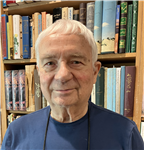
Willem Floor
Willem Floor studied development economics, non-western sociology as well as Persian, Arabic and Islamology from 1963-67 at the University of Utrecht. He received his doctoral degree from the University of Leyden in 1971. From 1983-2001 he worked for World Bank as an energy specialist. Currently, he works, writes, conducts research and gives lectures as an independent scholar. His most recent books include: “Agriculture in Qajar Iran,” (Washington DC: Mage, 2003), “Traditional Crafts in Qajar Iran,” (Costa Mesa: Mazda Publishers, Inc., 2003); “Public Health in Qajar Iran,” (Washington DC: Mage, 2004), “The History of Theater in Iran,” (Washington DC: Mage, 2005); “Wall Paintings and other Figurative Mural Art in Qajar Iran,” (Costa Mesa: Mazda Publishers, Inc., 2005); “The Persian Gulf 1500-1730,” (Washington DC: Mage, 2006), “The Dastur al-Moluk: Translation and Commentary,” (Costa Mesa: Mazda Publishers, Inc., 2007); “The Import of Textiles in Qajar Iran, (Costa Mesa: Mazda Publishers, Inc., 2007—forthcoming) and “The Travels of Gmelin in Northern Persian 1770-1774,” [translation] (Washington, DC: Mage—forthcoming, 2007).